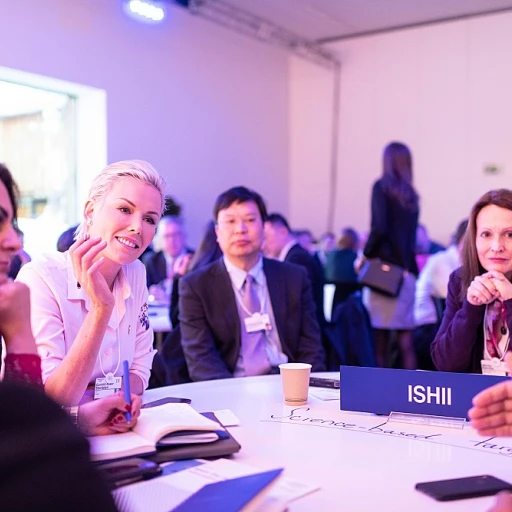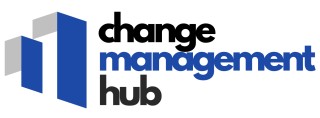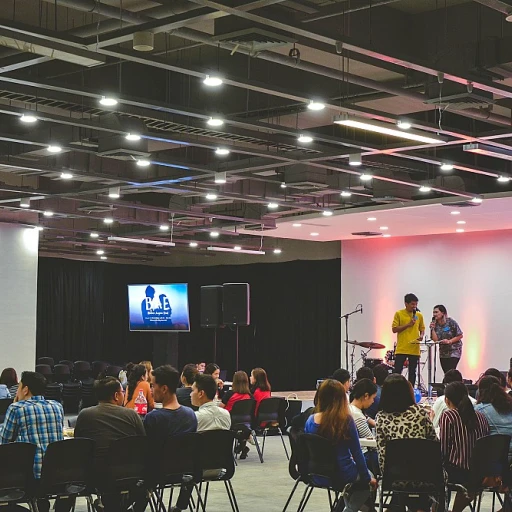
Defining the Gift Cycle in Non-Profits
Decoding the Gift Cycle Process in Non-Profit Realms
In the realm of nonprofit organizations, the gift cycle stands as a fundamental component that underpins the processes of donor engagement and fundraising. Essentially, at its core, the gift cycle refers to the stages that nonprofits undergo to manage donor relationships efficiently over time. While each nonprofit might have nuanced ways to interpret these stages, there exist common stages that most organizations adhere to. The cycle typically begins with identifying potential donors, also known as prospects, who align with the mission of the nonprofit. These individuals or entities have shown ability and willingness to contribute. Subsequently, donor cultivation becomes crucial as it involves nurturing these prospects through meaningful engagement to make them receptive to the organization's cause. Building strong relationships through relevant touchpoints, such as events or social media interactions, can foster a sense of allegiance and gradual trust. Once the connection is established, it becomes important to initiate the ask phase. This is where the organization directly seeks a gift, making use of any built rapport. However, receiving the gift does not mark the end of this cycle. The stewardship phase follows, focused on acknowledging and showing appreciation, thus ensuring donor retention. Donor life and retention form crucial aspects here as they contribute to long-term support. Effective donor management, when applied skillfully, will optimize these engagements, keeping the cycle vibrant and ongoing. As the cycle reiterates, management of major gifts often demands particular attention, necessitating tailored engagement strategies to secure these substantial contributions. Despite traditional methodologies, many nonprofits are exploring CRM database solutions to streamline their donor-related efforts. These solutions facilitate organized tracking of donor information, helping in the efficient management of the donor life cycle. In future sections, we delve deeper into how change management practices influence these cycles, the challenges that nonprofits encounter, and how effective strategies can optimize donor interactions and support.The Role of Change Management in Non-Profit Gift Cycles
The Influence of Change Processes on Gift Cycles
In navigating the complexities of the nonprofit landscape, change management emerges as a pivotal force in shaping successful gift cycles. Nonprofits often grapple with the dynamic needs of their donors and the ever-evolving strategies to enhance donor engagement. Understanding how change processes influence the gift cycle is essential for maximizing long-term benefits.
Change management in this context is all about fostering a proactive approach towards the relationship between nonprofits and their donors. Donor cultivation is not just about meeting current goals but adapting to the shifting expectations and preferences of potential donors. This involves creating flexible strategies that respond to the unique energy of major gifts and the evolving interests of major donors.
Effectively integrating change management into gift cycles facilitates better donor retention. By anticipating changes and realigning strategies, nonprofits can enrich their donor life cycle. This means preparing for both the predictable and the unexpected, transforming donor stewardship into a resilient, adaptable process.
A comprehensive approach to change management also aids in cultivating long-term donor support. Proactive donor engagement and stewardship initiatives are quintessential for sustaining the fundraising cycle, ensuring time donors maintain their enthusiasm over extended periods. By harnessing the power of social media and digital outreach, nonprofits can enhance donor engagement and expand their reach to new prospects.
Ultimately, incorporating effective change management practices in nonprofit gift cycles supports advanced donor management, enabling organizations to thrive even amidst uncertainty. By recognizing the power of adaptation, nonprofits can bolster donor cultivation and ensure major gift fundraising remains robust.
Challenges in Managing Gift Cycles
Overcoming Obstacles in Gift Cycle Management
Managing the gift cycle in nonprofit organizations comes with its own set of challenges. These obstacles can significantly impact donor engagement and the overall effectiveness of fundraising efforts. Understanding these challenges is crucial for developing effective strategies to optimize the cycle.
Donor Retention and Engagement
One of the primary challenges is maintaining donor retention and engagement. Nonprofits often struggle with keeping donors engaged over the long term. This can be due to a lack of effective donor stewardship and cultivation strategies. Ensuring that donors feel appreciated and informed about the impact of their gifts is vital for fostering long-term relationships.
Time and Resource Constraints
Nonprofits frequently face time and resource constraints, which can hinder their ability to manage the donor cycle effectively. Limited staff and budget can make it difficult to implement comprehensive donor management systems and strategies. This often results in missed opportunities for donor cultivation and major gifts.
Data Management and Prospecting
Effective data management is another significant challenge. Nonprofits must manage vast amounts of data related to donor life cycles, major donors, and potential prospects. Inadequate data management can lead to missed opportunities for donor cultivation and major gift fundraising. Utilizing tools and technologies to streamline data management can help address this challenge.
Adapting to Technological Changes
With the increasing role of social media and digital platforms, nonprofits must adapt to technological changes to enhance donor engagement. However, integrating new technologies into existing systems can be challenging. Organizations need to ensure that their staff is trained and equipped to leverage these tools effectively.
For more insights into how change management can help address these challenges, consider exploring the role of Gemba boards in change management.
Strategies for Optimizing the Gift Cycle
Enhancing Efficiency in Gift Cycle Management
Optimizing the gift cycle in a nonprofit organization requires a strategic approach to enhance the cultivation, management, and stewardship of donors. By focusing on certain key areas, nonprofit leaders can improve their donor engagement strategies and maximize the potential of their fundraising efforts over time.
One important strategy is to implement effective donor cultivation techniques. This involves identifying prospects, understanding their motivations, and crafting personalized outreach plans. Engaging with potential donors through targeted communications, such as personalized emails or social media interactions, helps build relationships and fosters long-term donor retention.
Creating a robust donor management system is also crucial. By using tools and platforms that track donor life cycles, nonprofits can personalize interactions and improve the donor's experience. These systems help maintain comprehensive records of donor interactions, preferences, and past contributions, allowing organizations to better tailor their engagement efforts.
Understanding the importance of stewardship in the donor cycle is another essential factor. Timely and thoughtful acknowledgment of gifts fosters trust and deepens the relationship between donors and the organization. Effective stewardship ensures that donors feel valued and appreciated, thereby enhancing donor retention and long-term support.
- Donor Engagement: Implement a multi-channel approach using social media and traditional methods to keep donors informed and engaged.
- Stewardship Practices: Regularly update donors on how their contributions are making an impact to reinforce their commitment to your cause.
- Cultivation Cycle: Develop comprehensive donor engagement strategies that include personalized communication and recognition opportunities.
Fostering engagement with major donors requires a focused effort on major gift fundraising initiatives. This involves identifying major gift prospects early in the donor cycle and dedicating time to nurture these relationships. Building strong connections with major donors often leads to substantial gifts that significantly support nonprofit missions.
Organizations must continuously refine these strategies, adapting to changes and trends within the nonprofit sector to ensure the gift cycle remains effective. By leveraging technology, embracing innovative donor cultivation practices, and enhancing stewardship efforts, nonprofits can effectively optimize their gift cycles, securing necessary resources to fulfill their missions.
Case Studies: Successful Gift Cycle Management
Real-World Examples of Effective Gift Cycle Practices
In the fast-evolving realm of nonprofit organizations, understanding and managing the gift cycle can truly transform operations. Let's delve into some instances where foresight and innovation in gift cycle management have led to tangible success.Leveraging Donor Engagement to Foster Long-Term Relationships
Several nonprofits have excelled by using data analytics to boost donor engagement. By analyzing donor life cycle stages, organizations can tailor their strategies to meet prospects' needs at precise moments in the engagement cycle. This often leads to higher levels of donor retention and maximizes the potential for major gifts. For instance, organizations closing the gap between donor cultivation and donor stewardship have seen an increase in major donor involvement and support.Optimizing Donor Management with Technology
The use of technology for donor management has proven beneficial for a number of nonprofits. The integration of innovative CRM systems helps track donor data effectively, aiding in the cultivation cycle. This support ensures that every engagement with potential donors is meaningful and well-timed, ultimately nurturing prospect relationships into major donors. Such a systematic approach to donor cycle management helps nonprofits maintain clarity and precision across all fundraising efforts.Implementing Strategic Donor Cultivation Tactics
A significant case of successful gift management is evident through sophisticated donor cultivation strategies. Nonprofit organizations have begun using social media platforms for real-time donor interactions. This allows immediate feedback, helping to refine donor engagement tactics. Strategic use of online campaigns can propel the fundraising cycle by reaching a broader audience and encouraging major gifts through emotionally resonant stories.Innovative Fundraising Initiatives
Many nonprofits have found success by implementing unique fundraising initiatives that coincide with their donor life cycle strategy. These initiatives often involve creating memorable experiences that tie into the organization's mission, thereby enhancing donor stewardship. By engaging donors in unique ways through events or virtual campaigns, charities strengthen their network of support, turning time donors into lifelong patrons. These cases underscore the dynamic interplay between an effective gift cycle, donor engagement, and ultimately successful fundraising efforts. Nonprofits need to remain versatile and innovative in their approaches to maintain a strong foothold in donor management, always seeking to refine their strategies to cultivate long-term relationships.Future Trends in Non-Profit Gift Cycle Management
Embracing Technological Advancements
In the evolving landscape of non-profit organizations, technological advancements play a pivotal role in shaping the future of gift cycle management. Organizations are increasingly leveraging CRM systems and data analytics to streamline donor management and improve donor engagement. These tools facilitate a more personalized approach to donor cultivation, allowing nonprofits to better understand donor life cycles and improve donor retention.
Fostering a Culture of Continuous Engagement
Future trends emphasize the importance of maintaining continuous engagement cycles with major donors. Nonprofits are exploring innovative ways to keep donors engaged over the long term, such as through immersive experiences and interactive content delivered via social media. Establishing strong connections with major and potential donors ensures a sustainable flow of major gifts and support.
Prioritizing Donor Stewardship and Cultivation
The focus on donor stewardship is increasingly becoming central to gift fundraising strategies. As the philanthropic landscape becomes more competitive, organizations are prioritizing building trust and transparency with their donors. This involves regular communication, recognizing gifts, and demonstrating the impact of donations. By fostering relationships built on trust, nonprofits can enhance their fundraising cycles and cultivate long term donor relationships.













